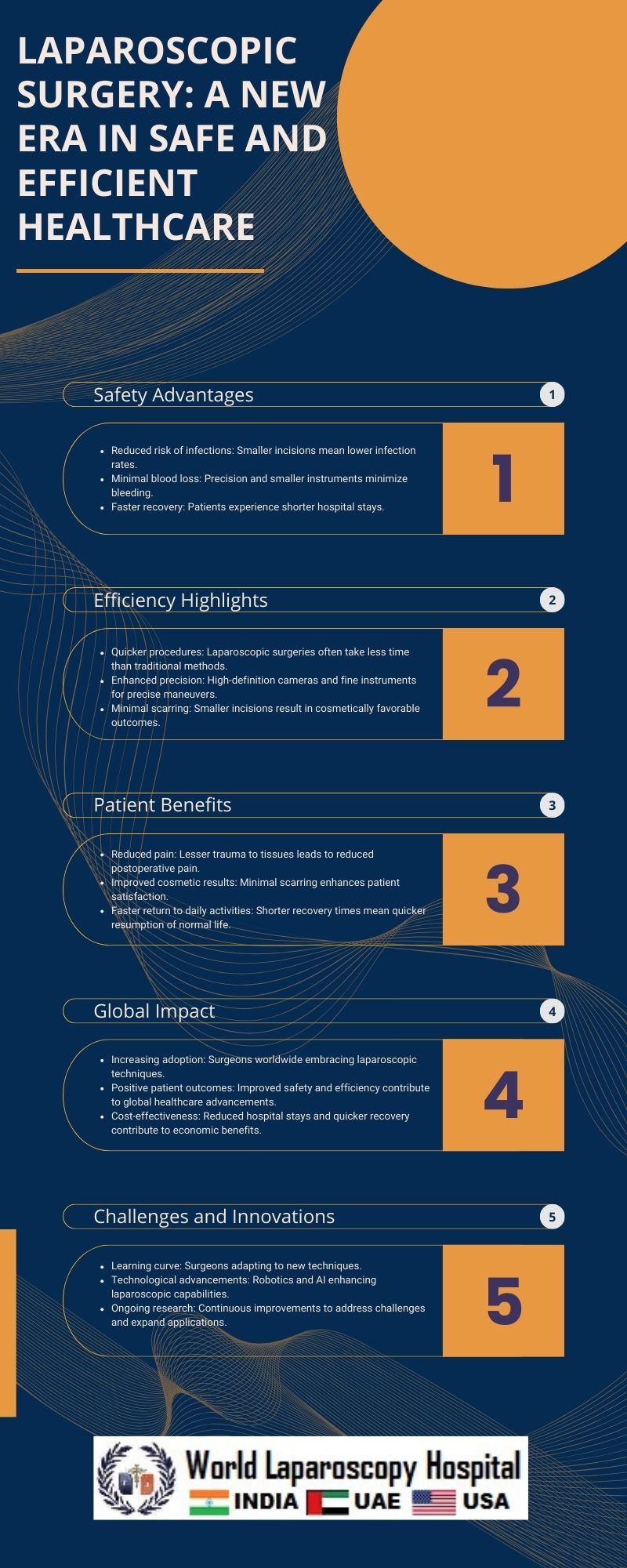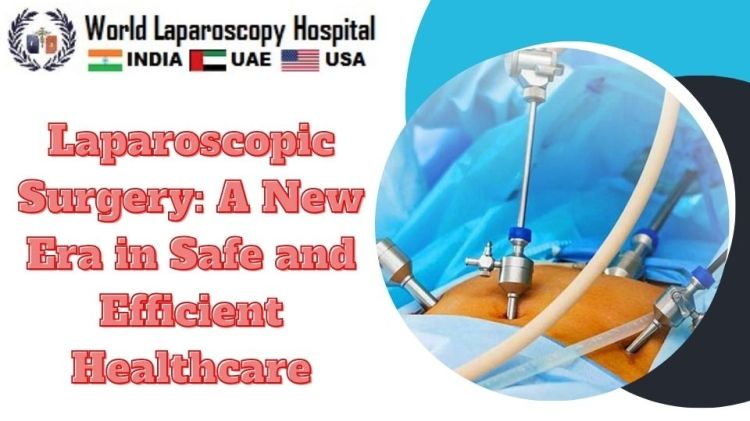Laparoscopic Surgery: A New Era in Safe and Efficient Healthcare
Introduction:
In the realm of modern medicine, laparoscopic surgery stands as a beacon of innovation, ushering in a new era characterized by enhanced safety and efficiency. This minimally invasive surgical technique, also known as keyhole surgery, has rapidly evolved to become a cornerstone of contemporary healthcare practices. With its ability to minimize patient trauma, expedite recovery, and ensure precise procedures, laparoscopy is reshaping the landscape of surgical interventions.

Historical Context:
The roots of laparoscopic surgery can be traced back to the early 20th century, but it wasn't until the late 20th century that technological advancements truly propelled it into mainstream medical practice. The introduction of fiber-optic technology and miniature cameras allowed surgeons to visualize internal organs with unprecedented clarity through tiny incisions.
Understanding Laparoscopic Surgery:
Laparoscopic Technique:
Laparoscopic surgery involves making small incisions through which specialized instruments, including a laparoscope with a camera, are inserted. The camera provides a real-time view of the internal organs on a monitor, allowing surgeons to navigate with precision.
Minimizing Trauma:
Compared to traditional open surgeries, laparoscopy significantly reduces trauma to the patient's body. The small incisions result in less blood loss, reduced postoperative pain, and a shorter hospital stay.
Faster Recovery:
One of the hallmark advantages of laparoscopic surgery is the expedited recovery it offers. Patients often experience a quicker return to normal activities, contributing to an overall improvement in their quality of life.
Applications of Laparoscopic Surgery:
Laparoscopic Cholecystectomy:
Among the earliest and most widely adopted applications of laparoscopy is cholecystectomy, the removal of the gallbladder. This procedure exemplifies the efficiency of laparoscopic techniques, with patients benefiting from smaller scars and a faster return to daily life.
Laparoscopic Hysterectomy:
Gynecological surgeries, such as hysterectomy, have also embraced laparoscopic approaches. The minimally invasive nature of the procedure reduces the risk of infection, lowers postoperative pain, and shortens recovery time.
Laparoscopic Colorectal Surgery:
In colorectal surgery, laparoscopy has gained prominence for conditions like colorectal cancer and diverticulitis. The precision offered by laparoscopic instruments enhances the surgeon's ability to perform intricate procedures with minimal disruption to surrounding tissues.
Laparoscopic Bariatric Surgery:
The field of bariatric surgery, focused on weight loss procedures, has witnessed a surge in laparoscopic applications. From gastric bypass to sleeve gastrectomy, the minimally invasive approach provides obese patients with effective solutions while minimizing postoperative complications.
Advantages of Laparoscopic Surgery:
Reduced Infection Risk:
The smaller incisions in laparoscopic surgery contribute to a decreased risk of postoperative infections. This advantage is particularly crucial in an era where antibiotic resistance is a growing concern.
Cosmetic Benefits:
The cosmetic outcomes of laparoscopic surgery are noteworthy. Smaller scars result in improved aesthetics, addressing not only the health needs of patients but also their psychological well-being.
Precision and Visualization:
The laparoscope's high-resolution camera offers surgeons a magnified and detailed view of the operative site. This enhanced visualization facilitates precise maneuvers, reducing the likelihood of errors.
Shorter Hospital Stays:
Patients undergoing laparoscopic procedures often experience shorter hospital stays compared to traditional surgeries. This not only reduces healthcare costs but also allows for a faster return to normalcy.
Challenges and Considerations:
Skill and Training: While laparoscopic surgery has become increasingly prevalent, mastering the technique requires specialized training. Surgeons need to develop proficiency in hand-eye coordination and adapt to the unique challenges posed by the minimally invasive approach.
Equipment Costs:
The initial investment in laparoscopic equipment can be substantial for healthcare institutions. However, the long-term benefits, including reduced hospital stays and lower complication rates, often outweigh the initial costs.
Patient Selection:
Not all patients are suitable candidates for laparoscopic surgery, depending on factors such as the complexity of the procedure and the patient's overall health. Careful patient selection is crucial for optimizing outcomes.
Future Trends and Innovations:
Robot-Assisted Laparoscopy:
The integration of robotic systems into laparoscopic procedures represents a promising frontier. Robot-assisted surgery enhances precision and dexterity, allowing for even more intricate maneuvers with the potential for further minimizing invasiveness.
Artificial Intelligence in Laparoscopy:
The application of artificial intelligence (AI) in laparoscopic surgery is poised to revolutionize the field. AI algorithms can assist surgeons in real-time decision-making, analyze imaging data, and predict outcomes, thereby augmenting the efficiency and safety of procedures.
Expanded Specialties:
As technology continues to advance, laparoscopic techniques are likely to expand into new medical specialties. From neurosurgery to orthopedics, the adaptability of laparoscopy holds promise for a broader spectrum of surgical interventions.
Conclusion:
Laparoscopic surgery has undeniably ushered in a new era of safe and efficient healthcare. Its impact extends beyond the operating room, influencing patient recovery, reducing healthcare costs, and improving overall quality of life. As technology continues to advance and practitioners refine their skills, laparoscopic surgery will likely remain at the forefront of medical innovation, shaping the future of surgical interventions. Embracing this transformative approach is not just a medical necessity; it's a commitment to a safer, more patient-centric healthcare landscape.
